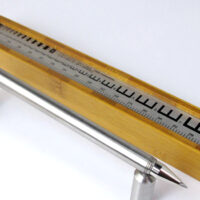And while Australia is going big with 3D Printing, Austria is going the opposite direction. The Vienna University of Technology has developed a method for 3D Printing on a microscopic scale using lasers. If you recall they printed a tiny F1 car, complete with details right down to the steering wheels and hubs. Now they’re working with biological materials, developing scaffolding for cells or particular molecules to colonize. Next step is making a tiny little Michael Schumacher to drive his tiny little F1 yet still win World Championships on regular-sized racetracks.
Inhalable 3D Prints

What’s the application? What good is it? Well it’s about creating homes for cells at a cellular level to create items, or useful molecules that can carry a charge, attract particular particles or act as a sensor. Its combining the freedom of design from 3D Printing with the potential applications of Nanotechnology. From a CAD perspective, this is another leap forward for CAD-Chemistry and CAD-Biology (Unwieldy words…maybe CAC and CAB? Can you imagine downloading pharmaceuticals from GrabCAB?) It seems clear that this is a step towards closer integration between electronics and biology.
Depending on the application, different molecules can be used. 3D photografting is not only useful for bio-engineering but also for other fields, such as photovoltaics or sensor technology. In a very small space, molecules can be positioned which attach to specific chemical substances and allow their detection. A microscopic three-dimensional “lab on a chip” becomes possible.
Whatever the outcome – let’s hope that a gust of wind doesn’t carry away your laboratory, or have a sneeze demolish your solar panel. Actually, I’m interested in the potential downsides of the technology. Nano-technology has produced a whole range of new materials that have later found to have proven or potential hazards to human health. Of course, what material isn’t hazardous – but the most recent study on nanofibers is a worthwhile read. It isn’t the technology of the future if its going to make the future less pleasant.
Source: Vienna University of Technology







